- Register
- Log in to Tune-In
- Wishlist (0)
-
Shopping cart
(0)
You have no items in your shopping cart.
Beatles News

Ariana Grande scores a chart double in the U.S. this week, which means she sits at No. 1 on both the singles and albums tallies. The superstar’s latest full-length, Eternal Sunshine, launches atop the Billboard 200, while the second official single from the project, "We Can't Be Friends (Wait for Your Love)," also begins its time on the Hot 100 in first place. As Grande earns another leader on the most competitive songs tally, one of her collaborators helps break a momentous milestone.
"We Can't Be Friends (Wait for Your Love)" credits just three people as writers on the tune–Grande, Ilya, and Max Martin. With one more Hot 100 No. 1 to his credit, the latter of those three talents moves up on the ranking of the most successful songwriters in American history.
Martin has now written 27 songs that have risen to No. 1 on the Hot 100 throughout his decades as an in-demand hitmaker. As "We Can't Be Friends (Wait for Your Love)" opens in first place, he breaks his tie with John Lennon for the second-most Hot 100 champions among songwriters, according to Billboard.
Before this week, Martin and Lennon were tied, with 26 No. 1s on the Hot 100 apiece. Martin added to his sum earlier this year, thanks t details
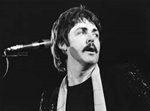
Badfinger scored one of their biggest hits with “Come and Get It” in 1970. Little did folks know at the time that the song was not only written for them by none other than a Beatle, but the Beatle pretty much spoon-fed the track to the band.
What is the meaning of “Come and Get It”? What was their relationship to Paul McCartney, who wrote and produced the track? And what ultimatum did he make of the band before they were allowed to record the song? Let’s find out, shall we, Sonny?
Badfinger formed in the early ‘60s as The Iveys, until a name change took place at the request of their new label Apple Records. The Beatles-run company signed a wide variety of artists in their first few years of business. But Badfinger performed music in a similar vein to the Fab Four: rock with smart, melodic songwriting and thrilling vocal harmonies.
Unfortunately, they didn’t feel they were receiving enough attention from the label in their earliest days of recording for them. In fact, Badfinger member Ron Griffiths even gave an interview to that effect. Apparently, the old saying that the squeaky wheel gets the grease proved correct in this case, because the band were details
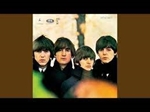
With the Beatles being the musical giants that they are, few people focus on the times when they’ve fallen flat. Though their low moments couldn’t possibly compare to their many high points, the three songs below are among the least loved Beatles songs–at least those evidenced by low streaming stats.
We will admit that we love any song that allows Ringo Starr to shine for a moment. Though he has far more famous bouts behind the microphone, this cover of a Carl Perkins song has its charms. Starr does a bang-up job toe-tapping his way through this snappy track. Though, it’s not surprising that this song has more or less fallen beneath the cracks. It’s not particularly memorable.
Source: Alex Hopper/americansongwriter.com
details
“Drive My Car” owns a special place in Beatles history because of its status as the opening track to the 1965 album Rubber Soul, one of their greatest triumphs. On its own, it stands out as an early example of the band touching on more adult, even risqué matters, as they left their innocent moptop image behind.
What is the song about? And how did John Lennon’s criticism help Paul McCartney bang the song into shape? Let’s rev up the engines and find out all about “Drive My Car.” Beep beep, yeah! The Beatles thrived on the songwriting partnership of John Lennon and Paul McCartney. But rarely was it a case of the two sitting next to each other, trading off musical notes and words until a song was complete. Instead, one would usually come to a session with at least an idea or a title or a melody, anything upon which they could build.
In the case of “Drive My Car,” McCartney provided the impetus with a melody that he really liked. However, his lyrics, which included the refrain You can buy me golden rings, were another story. McCartney knew that he didn’t have it right, and Lennon only confirmed his suspicions (allegedly calling the words “crap” details

A rare Beatles record sells for £4,200 despite having an incredibly shabby sleeve.
The Beatles aren't just one of the greatest bands of all time, but also the biggest selling.
Every proper Beatles album went to number one (and the Yellow Submarine soundtrack stalled at "only" number three) and they've sold anything from 180 million to 500 million records across all formats, depending on how you're counting
You'd be forgiven for thinking that surely none of these old records can be worth all that much, given that there are so very many out there.
But for collectors, there are records, and records. There are mis-pressings, rarities, imports, the quickly withdrawn controversial "butcher cover" for the US album Yesterday and Today, and all sorts of variations that can make a single record incredibly valuable.
Source: Mayer Nissim/goldradiouk.com
details
The Beatles might have broken up in 1970. But that didn’t stop them from writing songs about each other once they went their separate ways. There are enough of these tracks that you can make up a solid playlist of about a half-hour or so consisting of them.
These songs ran the gamut from nostalgic to humorous to flat-out nasty. We counted six of them. Let’s rank them based purely on their musical effectiveness, without taking sides in the post-Beatles breakup wars.
6. “Early 1970” by Ringo Starr
“Early 1970” kind of spells out its problems within the lyrics, when Starr sings in the final verse about his musical limitations: I play guitar, A-D-E / I don’t play bass ’cause that’s too hard for me / I play the piano if it’s in C. Indeed, this song doesn’t do enough musically to be compelling. It’s also odd that he puts the verse about Paul McCartney first. It feels like the I wonder if he’ll play with me one-liner would work better as the song’s punch line. Still, there’s something charming about the whole track, if only because there’s no animosity.
Source: Jim Beviglia/americansongwriter.com
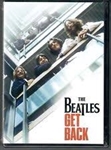
Director Peter Jackson’s eight-hour documentary “The Beatles: Get Back” is set to be released on DVD and Blu-Ray this summer, with the sprawling doc from 2021 finally available in physical editions July 12.
If there’s a sense of deja vu to that announcement, it’s because these home video editions were already previously announced to come out six months earlier, but that release was scotched before it happened due to a defect that was detected in the discs.
“The Beatles: Get Back” has been originally scheduled to come out Feb. 8, after an initial announcement Jan. 5. But Beatles fans who had placed their orders noticed them getting canceled as the winter release date approached. It was said the reason for the cancellation was an imperfection in the 7.1 audio mix, causing the discs to need to be remanufactured. A few copies did slip out at retail despite the pre-release recall and became high-bid items on the resale market.
With the new release date finally officially confirmed, each of the sets breaks the 468-minute doc down into three separate discs. There are no bonus features beyond the documentary itself, although the foldout package includes four commemorativ details
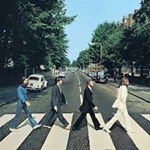
The Beatles’ Abbey Road is getting reissued for its 50th anniversary. The album has been newly mixed by producer Giles Martin (son of the late George Martin, who originally produced Abbey Road) and mix engineer Sam Okell. The super deluxe box set also comes with 23 additional tracks, consisting of recordings and demos. The 4xCD collection is housed in a 100-page hardcover book that has a foreword from Paul McCartney, an introduction from Giles Martin, a written history from Kevin Howlett, and an essay on Abbey Road’s influence by music journalist and author David Hepworth.
Along with the super deluxe edition, there will be a 3xLP deluxe vinyl edition of Abbey Road, a 2xCD deluxe edition, and standard edition with the new stereo mix (available as one CD, one vinyl LP, or one picture disc). Below, listen to the new 2019 mix of “Something,” as well as a studio demo and an instrumental take. Scroll down to preview the Abbey Road 50th anniversary collection.
The 50th anniversary editions of Abbey Road are out September 27 (via Apple Corps Ltd./Capitol/UMe). Learn more about the collection at the Beatles’ website.
In 2017, Sgt. Pepper’s Lonely Hearts Club Band was reissued f details

Sir Paul McCartney used The Beatles’ lyrics to urge Russian president Vladimir Putin to free Greenpeace activists.
The ‘Let It Be’ singer, 81, wrote to the 71-year-old despot as part of a campaign to release eco-activists charged with piracy in 2013 after they mounted a protest against a floating oil rig in the Pechora Sea on their Arctic Sunrise vessel.
A new BBC documentary titled ‘On Thin Ice: Putin V Greenpeace’ reveals Sir Paul wrote to Putin as part of the row that erupted after 28 campaigners and two freelance journalists were detained by Russia.
The singer wrote: “Forty-five years ago I wrote a song about Russia for The White Album, back when it wasn’t fashionable for English people to say nice things about your country.
“That song had one of my favourite Beatles lines in it: ‘Been away so long I hardly knew the place, gee it’s good to be back home.’
“Could you make that come true for the Greenpeace prisoners?” The six-part BBC series will also feature unseen footage from during and after the protest as well as interviews and reconstructions.
Source: uk.news.yahoo.com

Like most songs in the early Beatles catalog, “I’ll Cry Instead” doesn’t seem super consequential. Early rock was mostly focused on tales of love gone south, written in language that could ostensibly be described as surface level. But when I get home to you / I find the things that you do / Will make me feel alright…And please, say to me / You’ll let me hold your hand…it’s not the same mind-bending lyricism the Beatles would adopt later in their career.
However, hidden among songs like “A Hard Day’s Night” or “I Want to Hold Your Hand” are a few deeper songs. Included in that pack is “I’ll Cry Instead.”
I’ve got every reason on earth to be mad
‘Cause I just lost the only girl I had
If I could get my way
I’d get myself locked up today
But I can’t, so I’ll cry instead
Though the simple, easily-anticipated melody might throw off some listeners, this song holds quite a powerful meaning for its songwriter, John Lennon.
Looking at the lyrics without any context, it seems like Lennon was attempting to create a commentary on fame, which would make sense given details
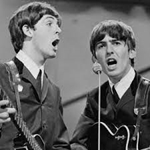
On March 15, 1967, a lone Beatle entered the recording studio to create a song that would forever define the Fab Four’s shift from teeny-bopper sweethearts to counterculture royalty.
George Harrison’s “Within You Without You” was the last track completed for ‘Sgt. Pepper’s Lonely Hearts Club Band. ‘ It opened the B side and served as a declaration of Harrison’s musical and ideological independence from the cultural behemoth that had become the Liverpool rockers.
Performed by Harrison, Neil Aspinall, and an ensemble of Indian instrumentalists, the song’s creation reflected the Beatles’ troubled dynamic at the time: distant, disjointed, and dissolving. A Reluctant Beatle’s Defining Work.
Shortly after ‘Sgt. Pepper’s release in 1967, George Harrison admitted to biographer Hunter Davies, “I don’t personally enjoy being a Beatle anymore. All that sort of Beatle thing is trivial and unimportant. I’m fed up with all this ‘me, us, I’ stuff and all the meaningless things we do. I’m trying to work out solutions to the more important things in life.”
Thus, “Within You Without You&rdq details

John Lennon believed he shocked the other Beatles with one album. Here's why he found their reaction to it surprising.
When John Lennon released the album Two Virgins in 1968, Paul McCartney, George Harrison, and Ringo Starr were politely shocked. While they tried not to get caught up in the public outcry over the album cover — which featured full frontal nudity from Lennon and Yoko Ono — they didn’t approve of it. Lennon said it surprised him that McCartney and Harrison were so prudish. John Lennon said Paul McCartney and George Harrison were surprisingly prudish
Lennon and Ono chose to pose naked on the cover of Two Virgins because they wanted to reveal all of themselves to the public. It was a bold choice that brought the couple a great deal of blowback.
“It was insane!” Lennon said in The Beatles Anthology. “People got so upset about it — the fact that two people were naked. I didn’t think there’d be such a fuss. I guess the world thinks we’re an ugly couple.” John Lennon and Yoko Ono's face peek out from a circle of the otherwise hidden album cover for 'Two Virgins.' There is brown paper over it. He found it particularly surprising th details

The Beatles never played in Nashville, but five decades ago, Paul McCartney set up shop in Wilson County. It was June of 1974 when one superstar came to Lebanon. That summer, the former Beatle and his band Wings landed in Middle Tennessee.
Lebanon resident Sandra Bryant referred to those days as Paul McCartney fever and her husband Tick remembered those days vividly.
“Everybody in town eventually knew, they were trying to keep it secret, but he was spotted in so many places,” Bryant said. Fifty years later, those stories are still being shared today. “He’s really cute! Haha, he was so cute! I thought I was going to faint!” said Sandra Bryan.
Legend has it, Paul and Linda McCartney were looking for a summer escape and through music industry connections, they found a farm in Lebanon on Franklin Road.
“It was these two houses, a house here, a house there, 133 acres,” said Troy Putman. Putman’s father, Curly, sealed the deal, and in return a trip of a lifetime in exchange for their family home. “At age 12, we went to Hawaii for six weeks that was sort of a paid vacation,” said Putnam.
Paul McCartney and his band Wings were spotted al details
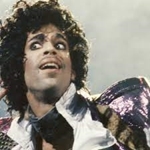
When Paul McCartney, George Harrison, and Ringo Starr reunited The Beatles for their 1995 Anthology 1 in the early ’90s, they revisited a song John Lennon had written but never released. Set as a bonus track on the anthology, the three Beatles started working on “Free As a Bird,” originally written and recorded by Lennon in 1977 but never completed.
A simple piano demo, “Free As A Bird” was recorded by Lennon at his home in the Dakota Building in New York City. Though he never completed it in the studio, it was one of the songs he recorded to cassette during his “Househusband” period between 1975 and 1980.
As Anthology 1 was in the works, the former Beatles used Lennon’s previously recorded vocals from the demo. To complete the song, the three added their vocals to more verses, along with instrumentation. Lennon’s vocals were then weaved throughout the track, something co-producer Jeff Lynne achieved by using analog technology and tricks. To complete the song “entailed doing whatever manipulations [Geoff] Emerick [engineer] and [Jeff] Lynne could achieve to help bring out Lennon’s voice above the piano which was playing along with him,” reco details

This week’s podcast episode of A Life in Lyrics sees Paul McCartney looking back on the Sgt Pepper’s Lonely Hearts Club Band track, A Day in the Life.
The Beatles' classic 1967 track is attributed to Lennon-McCartney but was mainly written by John Lennon with Macca contributing to the song’s middle section.
Reflecting on the opening lyrics about a “lucky man who made the grade”, McCartney wondered if the words were inspired by Lennon’s own struggles.
The 81-year-old said: “When John would bring these things in, it's only these days that I would say, ‘Was he talking about himself? Was there some sort of psychological aspect where he's a lucky man who made the grade?’
Mike McCartney, Paul McCartney's brother, was the original Beatles drummer
“And John did, around about this time, get a little bit out in Weybridge doing drugs. And we were a little disillusioned because we'd sort of given up playing live. So him bringing that in, I would just go with the picture that he was painting.”
McCartney also shared how the pressures of Beatles fame inspired Sgt Pepper’s: “Here's the idea. We are these four space cade details
